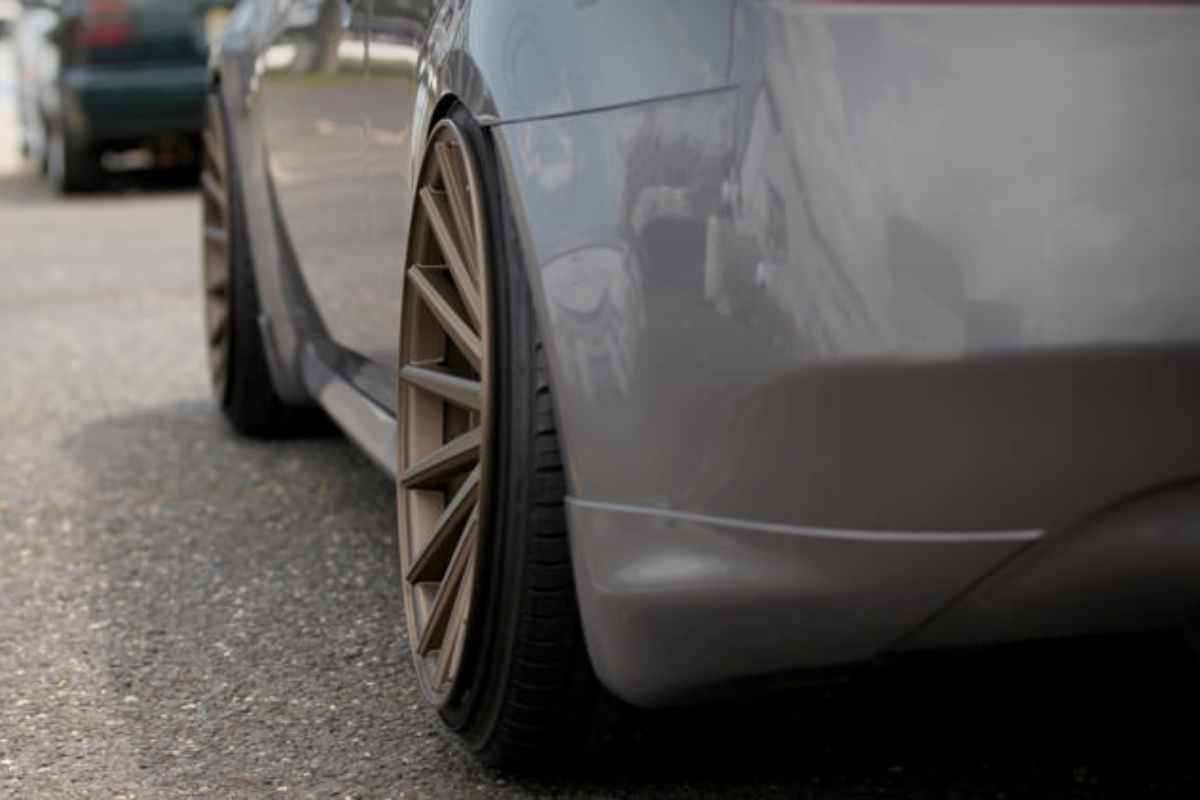It is possible that operating a staggered configuration in an AWD car will be more challenging due to all-wheel-drive systems’ nature. A staggered design means that you’re running larger wheels and tires in the back. You see this type of setup on drag builds all the time where the front tires are skinny, and the rear tires are FAT. When driving an RWD vehicle, all the power is transferred to its rear wheels and tires.
What are Staggered Wheels?

Different-sized wheels on one axle are known as staggered wheels. Keep this in mind when referring to wheel offset, which is the difference between the offset of each wheel. Reversing the arrangement for a front-wheel-drive car is the only way you’ll benefit.
There are two basic types of staggered wheels. The breadth of the wheel is the first difference to be considered. This allows you to make minor adjustments to the width of a tire without having to alter the rims or any other parts. A little more effort is required to construct the second staggered wheel version. A larger diameter tire is created when you increase the diameter of the rim.
Shop All Staggered Wheel Sets Here
Benefits of Staggered Wheels

Staggered wheels provide a few advantages, the most notable of which is improved traction. To better grip the pavement, a wider tire offers a greater surface area for the tire to grip. While it’s true that larger tires have higher friction, the combined advantages of better traction clearly outweigh this loss.
With AWD and Staggered Setups, there are issues.

If you have an all-wheel-drive (AWD) car, ensure the front and rear tires are the exact sizes. This will keep your AWD vehicle safest. It is common for AWD systems to limit power to prevent the car from spinning out into oncoming traffic. Because of the nature of the powertrain, staggered setups on AWD are pretty tricky.
Uneven Tire Wear
To have more excellent traction, more extensive tires with a larger surface area will need to grip the road more tightly, leading to uneven tire wear. Even if you place larger wheels at the back of a front-wheeled drive vehicle, you won’t see any performance improvement. Similarly, it would be best if you double-check that the tires on your front and rear axles are set to separate pressures.
Decreased Braking Performance
In terms of grip, bigger wheels are better, but in terms of stopping power, your brakes have to work more. As another downside, staggered wheels reduce braking performance. However, this holds true if you’re expanding the width of your wheels rather than lowering their braking effectiveness. Upgrading your brakes is the next logical step after increasing your rim width.
Shorter Maintenance Intervals
Staggering wheels have a negative influence on performance and the frequency of maintenance. Your brakes and tires will both last shorter if you drive fast. Your warranty may be voided if you’re using tires that aren’t the correct size for your car while it’s under warranty.
Staggered AWD Setups: What You Need to Know Before Doing So

If you have a staggered configuration, you must have a wheel and tire that can only turn in one direction or have difficulty driving.
If you chance to own an AWD vehicle with factory-installed staggered axles, you’ll have an easier time managing more extreme configurations. If your car does not have this built-in variance, the most important guideline to follow is to have a 1% difference between your wheel’s entire front and rear diameters (including the tire).
Cautionary Note

No, we’re not urging everyone to go out and buy a 6 percent staggered AWD configuration since their vehicle came from the factory with only 0.5% of the variation. So why don’t you see any factory AWD vehicles that look like drag cars? Because AWD is best used with little or no fluctuation.
Other Traction Enhancement Methods

Consider adding weight to your car’s rear wheels if you want to enhance grip in snowy weather. The tires’ ability to grip the road better is improved as the load on the vehicle rises. Adding weight to a vehicle; instead, reducing performance rather than weight is preferable.
It may be the only practical choice if you want to improve your vehicle’s traction without investing a lot of time and money upgrading it. Upgrades to your car’s suspension system may also increase traction and vehicle handlings, such as Torsion bars, Performance shocks, and Leaf springs.
Should you do it?

When used on the proper vehicle, Staggered wheels may provide a noticeable performance improvement while also enhancing the overall appearance of your car. You may benefit from bigger tires even if you don’t intend on racing. With staggered wheels, you gain improved traction, better braking, and quicker turning, to name a few.
Both wide tires and more giant rims are excellent options for improving your car’s appearance. If you can’t decide, why not take your pick of the two?





What’s the most important things to know when selecting non-factory tire sizes for an AWD vehicle that came with a staggered setup from the factory? I assume matching diameter between front and rear is the most important to not damage the AWD system?
I have a 2016 BMW X5 M-line Xdrive 50i that has the stock OE 20” wheels.
Front: 275/40/R20
Rear: 315/35/R20
I’m wondering if I can go either slightly more aggressive with a lower profile & stretched tire size or less aggressive with more sidewall for added suspension & comfort.
Im going to have someone email you to discuss options.